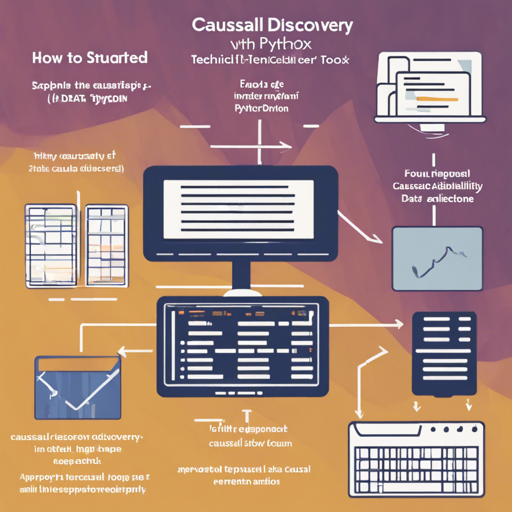Welcome to the digital era where understanding causation is paramount! The Causal Discovery Toolbox (CDT) is an innovative Python package designed to help researchers and data scientists infer causal relationships from observational data, utilizing various algorithms and graph structures. This blog post will guide you through the installation process and provide troubleshooting tips to get you started on your causal inference journey.
What is the Causal Discovery Toolbox?
The Causal Discovery Toolbox allows users to perform causal inference in both graph and pairwise settings using Python 3.5 and newer versions. It harnesses the power of libraries like Numpy, Scikit-learn, PyTorch, and R, making it a versatile option for data analysis. Among its features, the CDT provides tools for graph structure recovery and dependency assessment.
Installation Steps
Follow these simple steps to install the Causal Discovery Toolbox:
- Step 1: Check your Python Version
- Step 2: Install Required Libraries
- Step 3: Install PyTorch
- Step 4: Install the CausalDiscoveryToolbox Package
Ensure you have Python version 3.5 or later installed on your system.
The toolbox relies on several libraries. It’s recommended to use a package manager like Conda for ease of installation, especially for novice users.
Since the CDT uses some key algorithms from PyTorch, install it tailored to your hardware configuration via PyTorch’s website.
Run the following command in your terminal:
pip install cdtAlternatively, you can clone the repository and install from source:
git clone https://github.com/FenTechSolutions/CausalDiscoveryToolbox.git
cd CausalDiscoveryToolbox
pip install -r requirements.txt
python setup.py install --userDiving Into the Toolbox
Once installed, you can start using the toolbox by importing it into your Python scripts:
import cdtUnderstanding the Inner Workings of the Toolbox
Imagine the CDT as a detective agency specializing in causal relationships. Just like detectives review evidence (data) to draw conclusions about events (causes and effects), the CDT employs sophisticated algorithms to analyze data structures and recover causal relationships through dependency graphs.
Here’s a brief analogy to clarify how the CDT works:
- **Graph Structure Recovery** – Think of each node in a graph as a clue in a mystery. The toolbox analyzes how these clues relate to one another to uncover the underlying story (causal relationships).
- **Pairwise Inference** – Picture two detectives evaluating their evidence together. They identify relationships and interactions, akin to assessing how two variables affect each other in a dataset.
Troubleshooting Tips
While installations typically go smoothly, you might run into some hiccups. Here are common issues and their solutions:
- Issue: Installation fails with missing dependencies
Solution: Ensure that you have all the listed libraries installed. Use
pip install -r requirements.txtto install missing packages if you’re installing from source. - Issue: Import errors
Solution: Make sure your Python environment is set up correctly and you’re using the proper version of Python. Reverify the installation steps above.
- Issue: CUDA errors when using GPU equipment
Solution: Ensure you have the compatible version of PyTorch installed for your CUDA version. Use the configuration found on the PyTorch installation guide.
For more insights, updates, or to collaborate on AI development projects, stay connected with fxis.ai.
Conclusion
With the Causal Discovery Toolbox, you’re equipped to dive into the rich world of causal inference utilizing advanced techniques and algorithms. By following the installation steps and utilizing the troubleshooting tips, you’ll unlock the toolbox’s capabilities for your research or projects.
At fxis.ai, we believe that such advancements are crucial for the future of AI, as they enable more comprehensive and effective solutions. Our team is continually exploring new methodologies to push the envelope in artificial intelligence, ensuring that our clients benefit from the latest technological innovations.

